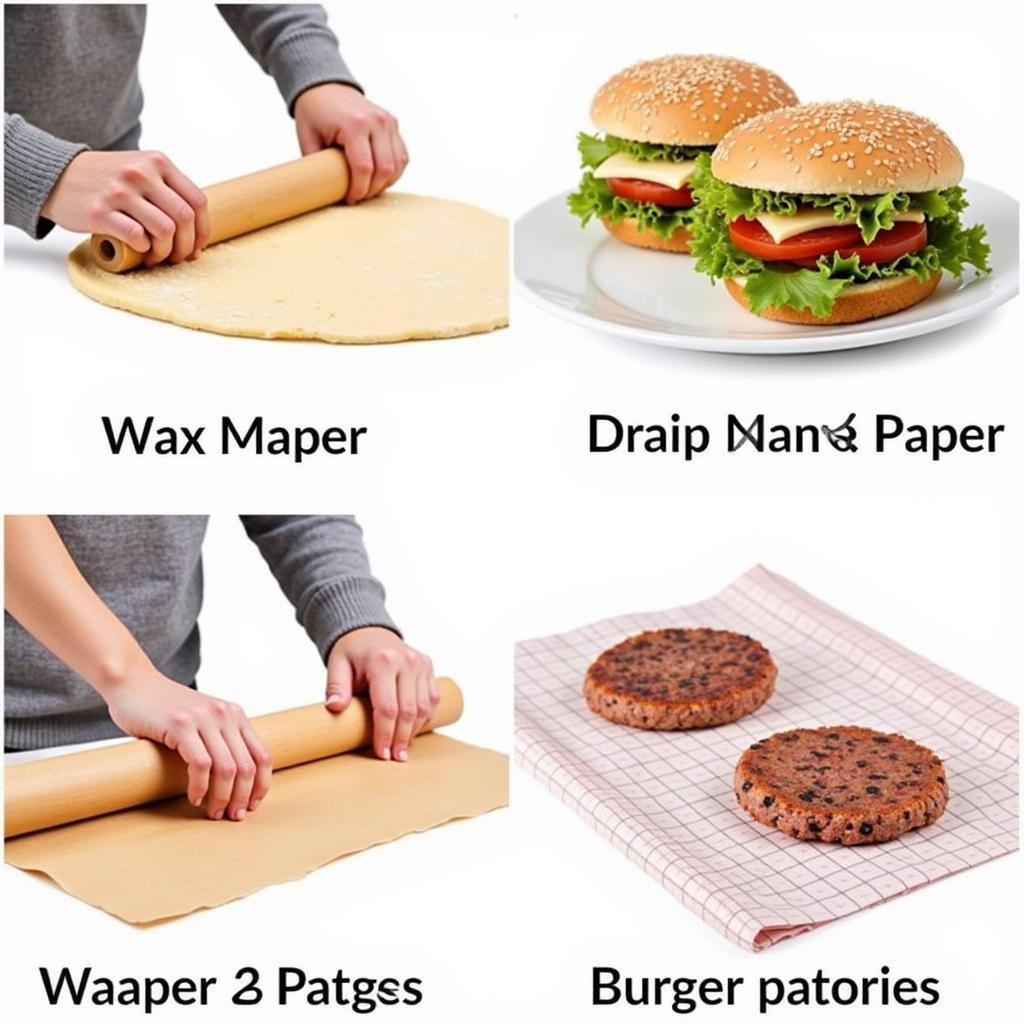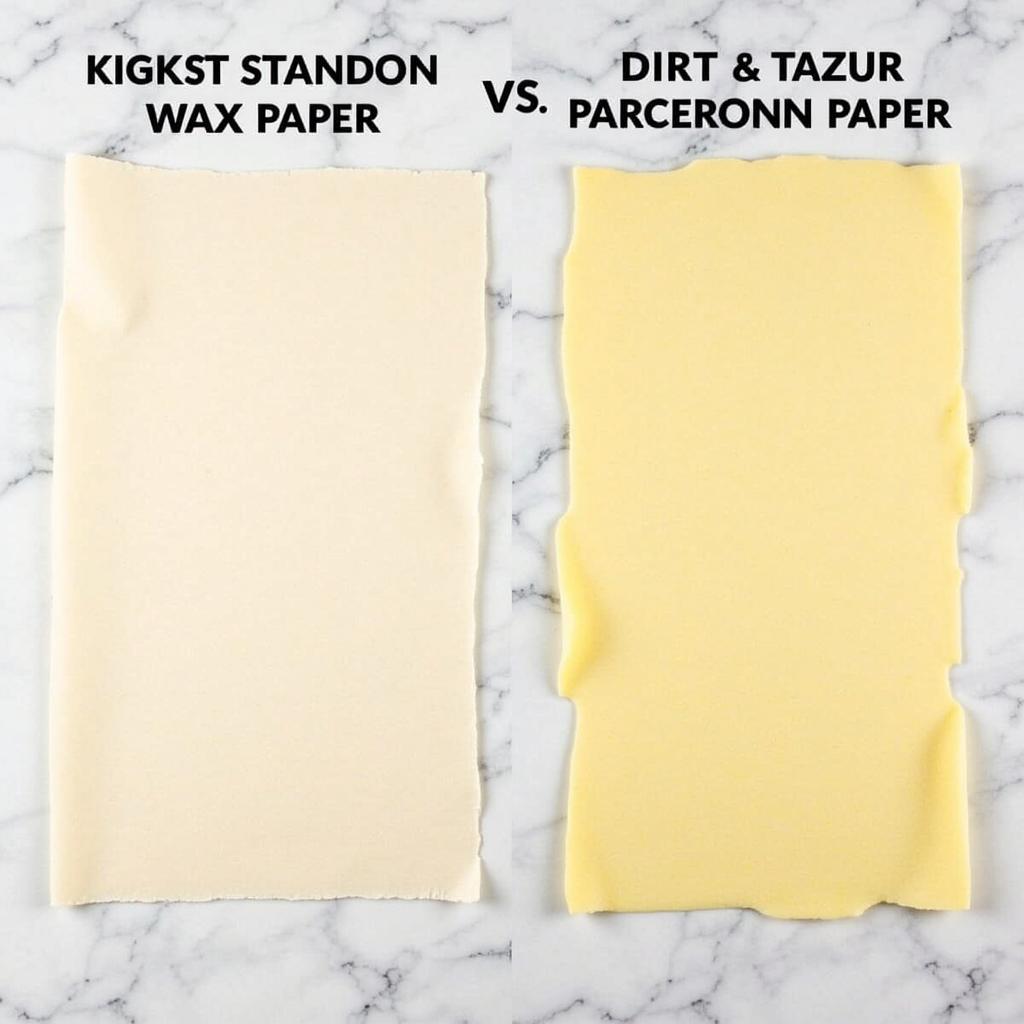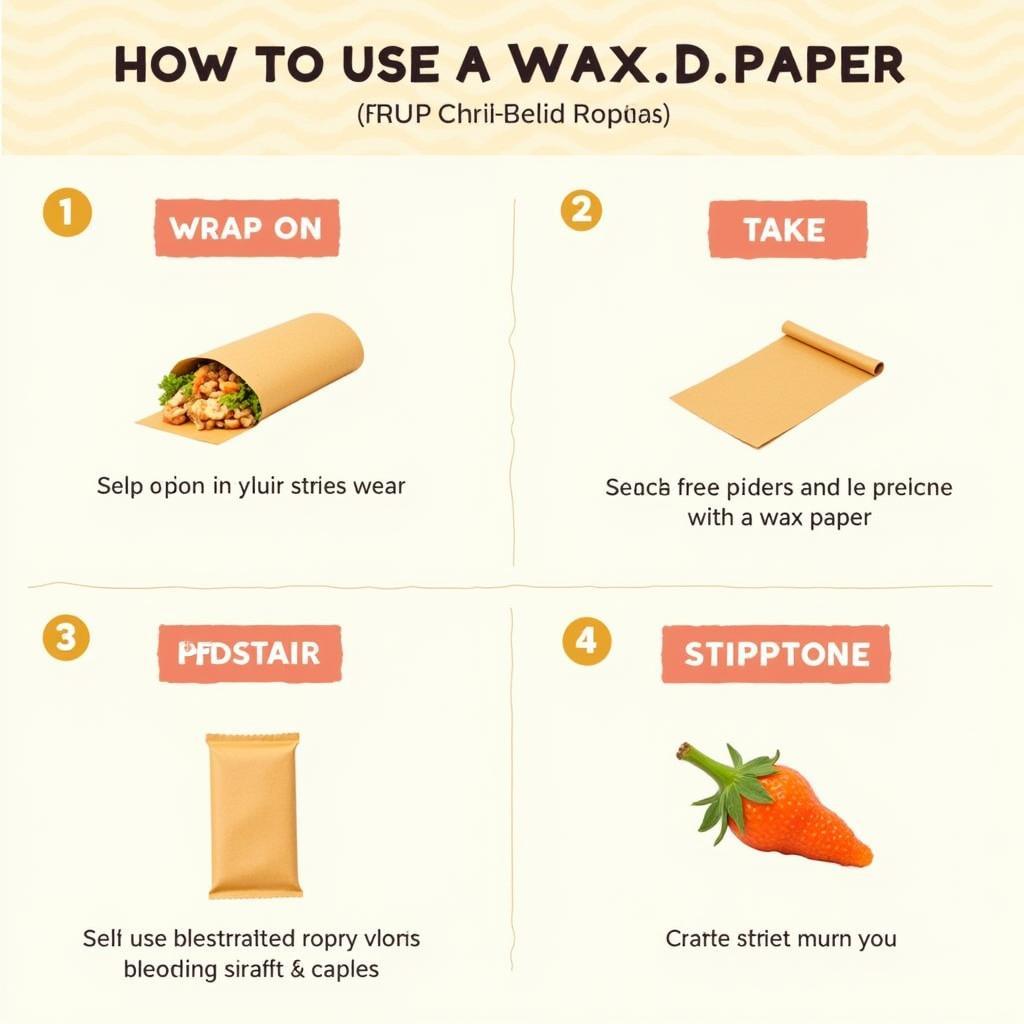Wax Paper Sheets For Food are a kitchen staple, offering a versatile and convenient way to handle various culinary tasks. From preventing sticking to wrapping food, these unassuming sheets play a crucial role in maintaining food quality and simplifying cooking and baking processes. This guide delves into the world of wax paper, exploring its uses, benefits, and addressing common questions. We’ll also compare it with other food wraps and provide helpful tips for choosing the right wax paper for your needs. See our page on food paper for more information on different types of food-grade paper.
What are Wax Paper Sheets for Food?
Wax paper is a type of paper that has been coated with a thin layer of wax, typically paraffin wax or soybean wax. This coating makes the paper non-stick and moisture-resistant, ideal for various food applications. While it’s not heat-resistant like parchment paper, wax paper still offers valuable functionality in the kitchen. It’s important to note the difference between wax paper and waxed paper. While they may seem similar, waxed paper refers to paper coated with a thinner layer of wax, often used for packaging. Wax paper, on the other hand, is designed specifically for food handling and preparation.
The Many Uses of Wax Paper Sheets
Wax paper’s non-stick properties make it a lifesaver in numerous kitchen scenarios. It’s perfect for rolling out dough, preventing sticky messes and ensuring easy cleanup. Need to separate layers of food in storage? Wax paper keeps things tidy and prevents them from sticking together.
- Preventing sticking: When rolling out dough or working with sticky ingredients, wax paper provides a smooth, non-stick surface.
- Wrapping food: Wax paper is great for wrapping sandwiches, cookies, and other food items for storage.
- Microwave splatter guard: While not suitable for direct contact with high heat, placing a sheet loosely over a dish can help contain splatters.
- Creating individual portions: Use wax paper to separate burger patties, cheese slices, or other food items for freezing.
- Crafting a makeshift funnel: Roll wax paper into a cone shape for easy pouring of dry ingredients.
What are the benefits of using food safe plastic sheets? While wax paper offers many advantages, exploring alternatives can be beneficial for certain applications.
 Wax Paper Uses in Kitchen
Wax Paper Uses in Kitchen
Wax Paper vs. Parchment Paper: What’s the Difference?
Though often confused, wax paper and parchment paper are distinct products with different applications. Wax paper has a wax coating, making it non-stick but not heat-resistant. Parchment paper is treated with silicone, making it both non-stick and heat-resistant, suitable for oven use. Choosing the right one depends on your specific needs. Consider our foil food wrapping paper as another alternative for wrapping and preserving food.
Can you put wax paper sheets for food in the oven?
No, wax paper is not oven-safe. The wax coating can melt or even catch fire at high temperatures. Parchment paper is the better choice for baking.
Is wax paper for food microwave-safe?
While you can use wax paper to cover food in the microwave to prevent splattering, avoid direct contact with the food or high heat for extended periods. The wax can melt.
 Wax Paper vs. Parchment Paper Comparison
Wax Paper vs. Parchment Paper Comparison
Choosing the Right Wax Paper Sheets for Food
Not all wax paper is created equal. Look for food-grade wax paper that is chlorine-free and made from sustainably sourced materials. Consider the size and quantity of sheets per roll to suit your needs.
“Quality wax paper is essential for food safety and optimal performance,” says renowned chef, Anya Petrova. “Look for unbleached, chlorine-free options to minimize chemical exposure.”
Keeping Your Food Fresh with Wax Paper
Wax paper can be a helpful tool in keeping food fresh, especially for short-term storage. Its moisture-resistant properties can prevent food from drying out or becoming soggy. It’s particularly useful for wrapping sandwiches, cookies, and other snacks. For keeping produce fresh, consider exploring our range of non plastic bags for food.
“Wax paper provides a simple yet effective barrier against moisture and air, helping preserve the freshness of your food,” advises food scientist, Dr. Ben Carter. “However, for long-term storage, consider other options like airtight containers or freezer bags.”
 Wax Paper Food Storage Tips
Wax Paper Food Storage Tips
Conclusion
Wax paper sheets for food are an invaluable kitchen tool, offering a convenient and versatile solution for various tasks. Understanding its properties and limitations allows you to maximize its benefits and ensure food safety. From preventing sticking to wrapping food for storage, wax paper plays a crucial role in simplifying cooking and baking. Remember to choose food-grade wax paper and avoid using it in the oven. Explore our fresh sheet food page for more food storage solutions.
FAQ
- Is wax paper biodegradable? Yes, most wax paper is biodegradable due to its paper base and natural wax coating.
- Can I reuse wax paper? While you can reuse wax paper for some tasks, it’s generally recommended for single-use applications, especially when in contact with food.
- What’s the difference between wax paper and freezer paper? Freezer paper has a plastic coating on one side, making it ideal for long-term freezer storage.
- Can I use wax paper in a toaster oven? No, avoid using wax paper in any type of oven due to the risk of melting or fire.
- Is wax paper compostable? Yes, wax paper is generally compostable.
Common Situations and Questions:
- Making candy: Wax paper is excellent for letting homemade candies cool and harden without sticking.
- Separating frozen hamburger patties: Prevent patties from sticking together during freezing with sheets of wax paper.
Other Helpful Resources:
- Check out our article on food-safe packaging materials.
- Learn more about different types of food wraps and their uses.
Need help?
Contact us at Phone Number: 02437655121, Email: [email protected] or visit us at 3PGH+8R9, ĐT70A, thôn Trung, Bắc Từ Liêm, Hà Nội, Việt Nam. We have a 24/7 customer support team.